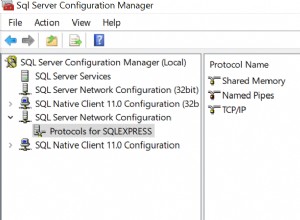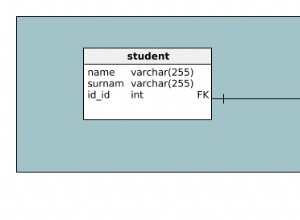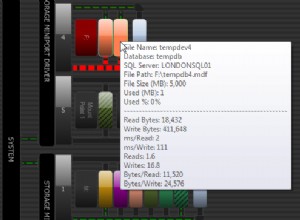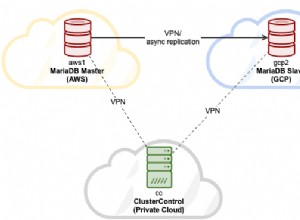Estrarrei i dati in più fasi:
SELECT xobjects.id, xobjects.name, xrows.index_id,
xrows.provider_id_description, xrows.provider_id
FROM XMLTABLE(
'/AuxiliaryType/AuxiliaryObject'
PASSING xmltype(
'<AuxiliaryType>
<AuxiliaryObject id="1" NAME="Provider_P107">
<Row>
<Index_id>1</Index_id>
<Provider_ID_description>GNRCN</Provider_ID_description>
<Provider_ID>GNRCN</Provider_ID>
</Row>
<Row>
<Index_id>2</Index_id>
<Provider_ID_description>EGUT12</Provider_ID_description>
<Provider_ID>EGUT12 </Provider_ID>
</Row>
</AuxiliaryObject>
<AuxiliaryObject id="2" NAME="Provider_P108">
<Row>
<Index_id>1</Index_id>
<Provider_ID_description>GNRCN</Provider_ID_description>
<Provider_ID>GNRCN</Provider_ID>
</Row>
<Row>
<Index_id>2</Index_id>
<Provider_ID_description>EGUT</Provider_ID_description>
<Provider_ID>EGUT </Provider_ID>
</Row>
</AuxiliaryObject>
</AuxiliaryType>'
)
COLUMNS
name VARCHAR2(30) PATH '@NAME',
id VARCHAR2(10) PATH '@id',
xrows XMLTYPE PATH 'Row') xobjects,
XMLTABLE(
'/Row'
PASSING xobjects.xrows
COLUMNS
index_id VARCHAR2(10) PATH 'Index_id',
provider_id_description VARCHAR2(30) PATH 'Provider_ID_description',
provider_id VARCHAR2(30) PATH 'Provider_ID') xrows;
La tabella XML xobjects contiene ciascuno degli AuxiliaryObject istanze all'interno di AuxiliaryType , dal tuo testo XML originale. Ha gli attributi name e id , più un sub-XMLType contenente le righe nidificate. La seconda tabella XML, xrows , lo espande in modo che gli elementi possano essere estratti. I join e il passaggio dei tipi XML creano la gerarchia che fornisce l'output desiderato:
ID NAME INDEX_ID PROVIDER_ID_DESCRIPTION PROVIDER_ID
---------- ------------------------------ ---------- ------------------------------ ------------------------------
1 Provider_P107 1 GNRCN GNRCN
1 Provider_P107 2 EGUT12 EGUT12
2 Provider_P108 1 GNRCN GNRCN
2 Provider_P108 2 EGUT EGUT
Funziona in SQL Developer rispetto a un database 11.2.0.3 e in SQL Fiddle .
Una versione precedente di questa risposta basata su CTE funzionava anche in SQL Developer ma SQL Fiddle ha ricevuto un errore ORA-600; che insieme al problema che hai riscontrato nella domanda suggerisce che forse SQL Fiddle si trova su una versione senza patch, o almeno con patch diversa, di 11gR2 che presenta bug nella gestione XML.




